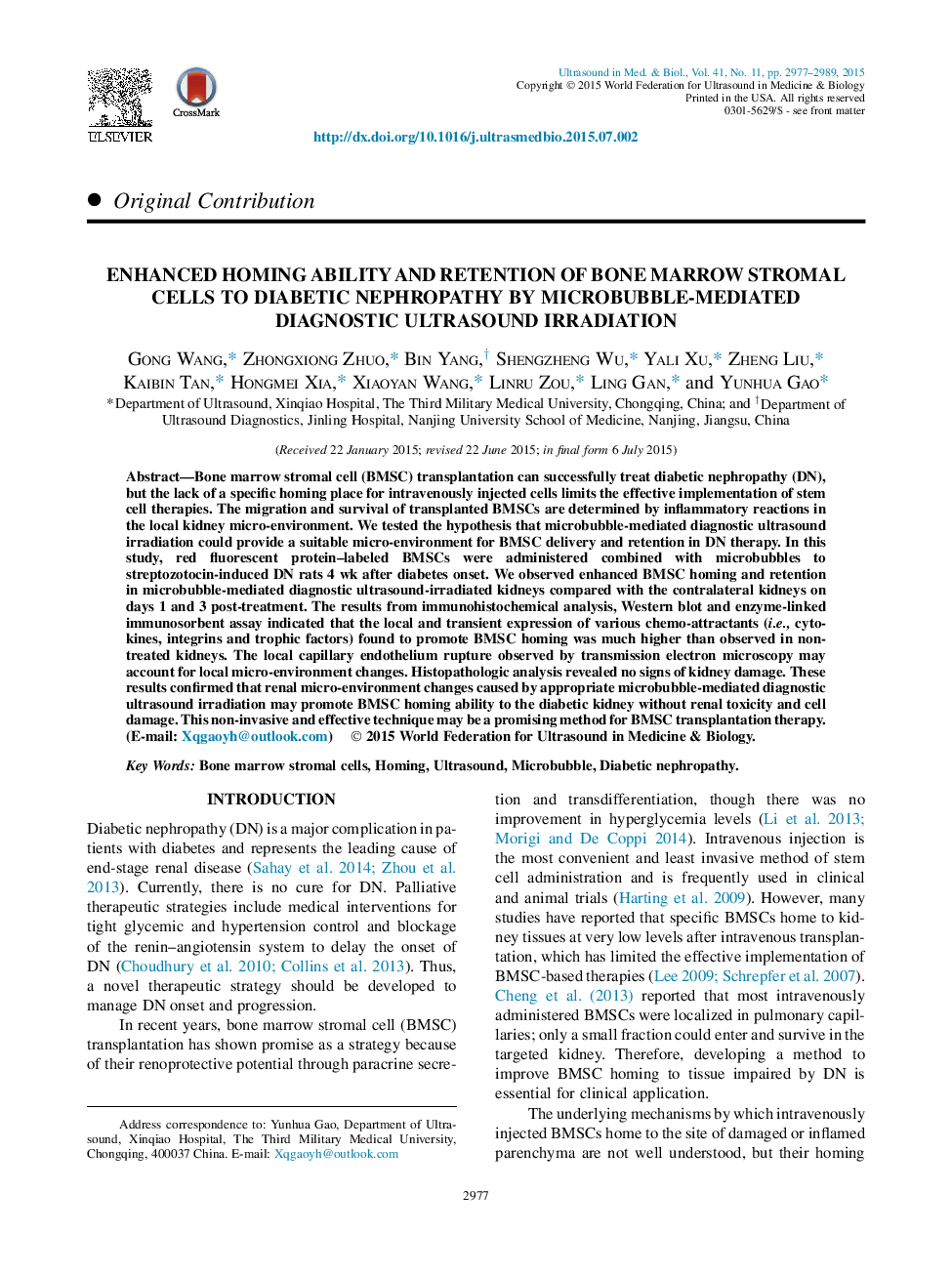| Article ID | Journal | Published Year | Pages | File Type |
|---|---|---|---|---|
| 10691167 | Ultrasound in Medicine & Biology | 2015 | 13 Pages |
Abstract
Bone marrow stromal cell (BMSC) transplantation can successfully treat diabetic nephropathy (DN), but the lack of a specific homing place for intravenously injected cells limits the effective implementation of stem cell therapies. The migration and survival of transplanted BMSCs are determined by inflammatory reactions in the local kidney micro-environment. We tested the hypothesis that microbubble-mediated diagnostic ultrasound irradiation could provide a suitable micro-environment for BMSC delivery and retention in DN therapy. In this study, red fluorescent protein-labeled BMSCs were administered combined with microbubbles to streptozotocin-induced DN rats 4 wk after diabetes onset. We observed enhanced BMSC homing and retention in microbubble-mediated diagnostic ultrasound-irradiated kidneys compared with the contralateral kidneys on days 1 and 3 post-treatment. The results from immunohistochemical analysis, Western blot and enzyme-linked immunosorbent assay indicated that the local and transient expression of various chemo-attractants (i.e., cytokines, integrins and trophic factors) found to promote BMSC homing was much higher than observed in non-treated kidneys. The local capillary endothelium rupture observed by transmission electron microscopy may account for local micro-environment changes. Histopathologic analysis revealed no signs of kidney damage. These results confirmed that renal micro-environment changes caused by appropriate microbubble-mediated diagnostic ultrasound irradiation may promote BMSC homing ability to the diabetic kidney without renal toxicity and cell damage. This non-invasive and effective technique may be a promising method for BMSC transplantation therapy.
Related Topics
Physical Sciences and Engineering
Physics and Astronomy
Acoustics and Ultrasonics
Authors
Gong Wang, Zhongxiong Zhuo, Bin Yang, Shengzheng Wu, Yali Xu, Zheng Liu, Kaibin Tan, Hongmei Xia, Xiaoyan Wang, Linru Zou, Ling Gan, Yunhua Gao,
